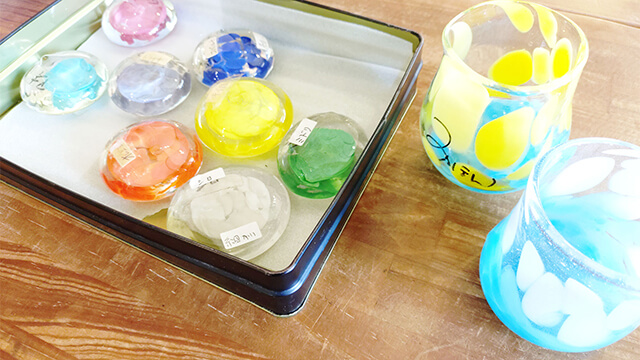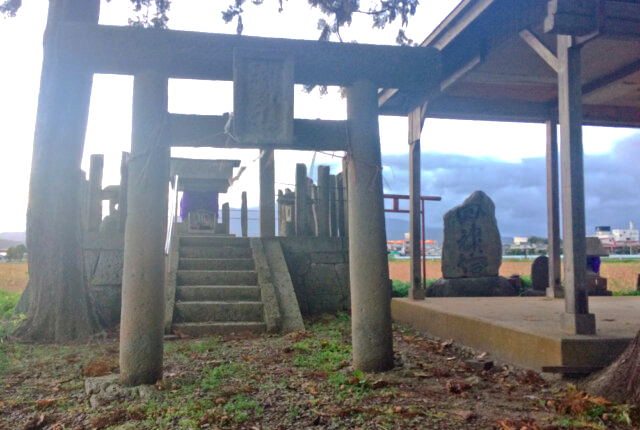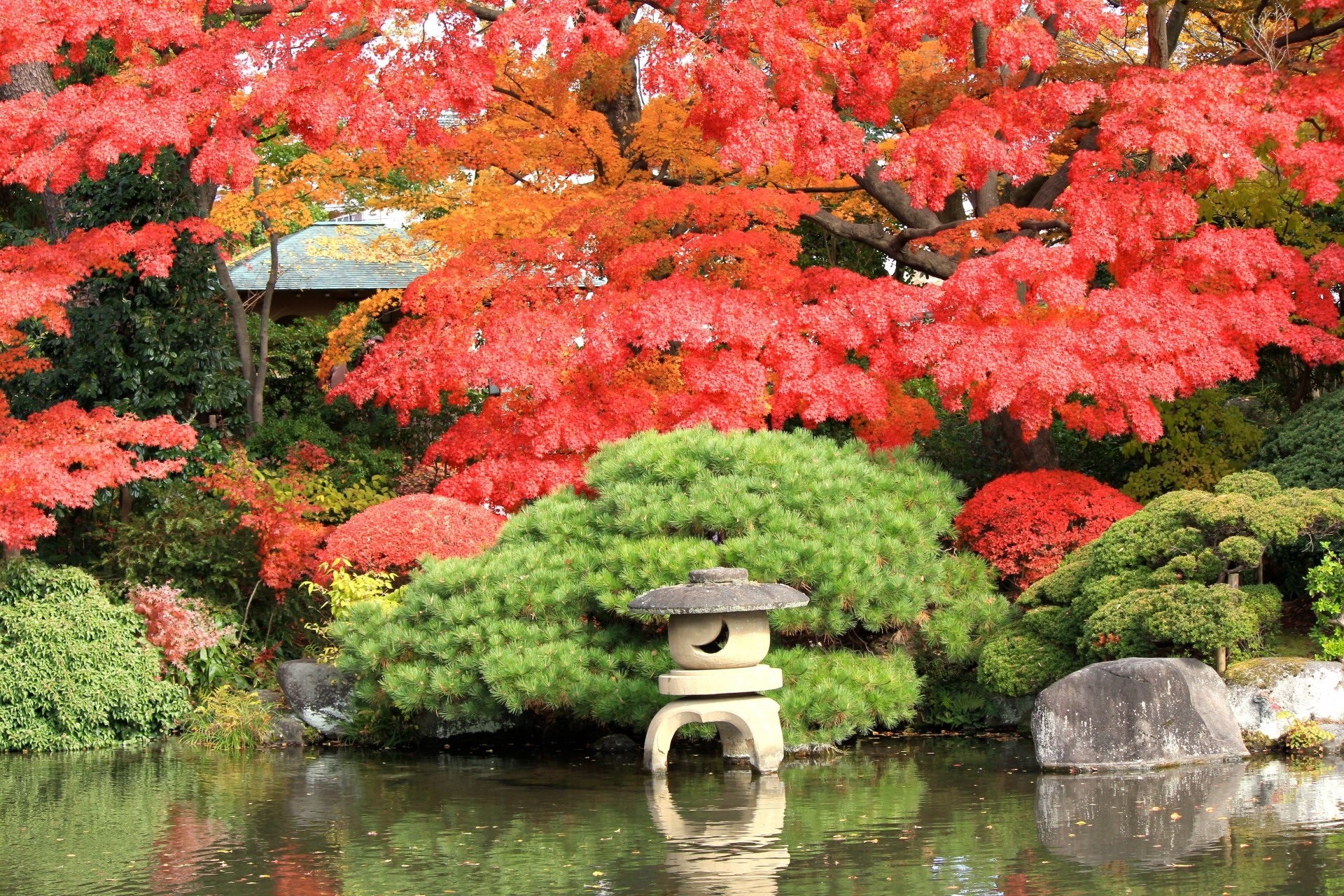[Yamagata, Kaminoyama,] Fun and Learning at the Kawaguchi Energy Recovery Facility—Witness the Miracle of Trash Turning into Power!
2025/09/12 This site contains advertisements. Category: experience
![[Yamagata, Kaminoyama,] Fun and Learning at the Kawaguchi Energy Recovery Facility—Witness the Miracle of Trash Turning into Power! アイキャッチ](https://bongheiberg.yamagata.jp/wp-content/uploads/2025/09/エネルギー回収施設(川口)1.png)
Hello everyone! This time, we went to visit the Energy Recovery Facility (Kawaguchi), a cutting-edge waste treatment facility in Kaminoyama City, Yamagata Prefecture, where parents and children can learn together! The facility also includes a park with large play equipment, a foot bath, and an observation corner, making it a fun place for children and adults alike to learn about the environment. It’s bustling with families on weekends, and there are plenty of other attractive spots in the surrounding area, so you can have a fulfilling outing!
This time, we’ll be sharing a report on our experience at the Energy Recovery Facility (Kawaguchi), where you can have fun while learning. If you’re looking for a fun family outing, be sure to check it out!
What kind of facility is the Energy Recovery Facility (Kawaguchi)?
2.png)
The Energy Recovery Facility (Kawaguchi) is a waste treatment facility located in the Kawaguchi district of Kaminoyama City, Yamagata Prefecture. Many visitors may recognize it from its large chimney and colorful playground equipment while driving along National Route 13. This relatively new facility, which began operation in December 2018, was jointly developed by Yamagata City, Kaminoyama City, Yamabe Town, and Nakayama Town. Located right next to the Yamagata Shinkansen tracks, the location allows children to see both Shinkansen and conventional trains up close, making it a great place to visit.
It’s more than just a waste disposal facility, with the site also featuring a park called the Children’s Interaction Plaza and a footbath. The facility also has many exhibits that teach children about the waste disposal process and the environment, and is designed to help children have fun while learning about where waste goes and the importance of recycling. These efforts have been highly praised, and the Kawaguchi Energy Recovery Facility has become a model facility contributing to the realization of a recycling-oriented society in the region. It is popular with families, with approximately 200 visitors on sunny days.
| Facility Name | Energy Recovery Facility (Kawaguchi) |
|---|---|
| Phone Number | 023-672-2115 |
| Business Hours | 9:00 AM – 5:00 PM (Free, No Reservation Required) |
| Closed Days | Wednesdays and New Year’s Holidays |
| Opening Periods Outside the Facility | Opening Period: April 1st – November 30th Winter Closure: December 1st – March 31st *Playground equipment and outdoor restrooms are not available. |
| Address | 854-1 Gotanda, Kawaguchi, Kaminoyama City, Yamagata Prefecture, 999-3245 |
| Access | Approximately 15 minutes by car from Kaminoyama Onsen Station (we recommend driving). |
| Parking | Available (EV quick charger available). |
| Official homepage | Kawaguchi Energy Recovery Facility official HP |
What is an “energy recovery facility”? What happens there?
3.png)
The Energy Recovery Facility (Kawaguchi) is, in a nutshell, a “waste-to-energy power plant.” The facility accepts approximately 130 tons of burnable waste per day from households in Yamagata City, Kaminoyama City, and other areas, and incinerates it in a state-of-the-art, high-temperature incinerator.
The heat from the incineration is used to create steam, which drives a turbine generator with a maximum output of 3,220 kW to generate electricity. The electricity generated is used to power machinery and lighting within the facility, and most of it is sent via the power company to nearby schools and public facilities. In other words, household waste is being reborn as a local energy source! The facility is called an “energy recovery facility” because of its initiative to create new energy from waste and use it instead of fossil fuels (thermal recycling).
The facility only accepts “burnable waste”!
This facility only accepts burnable waste. Recyclable waste and non-burnable materials other than burnable waste such as paper waste, food waste, and plastic are sorted by each household and recycled or disposed of in a different way. By incinerating only properly sorted “burnable waste,” the system allows for efficient energy recovery.
What’s more, the facility uses an advanced technology called a “fluidized bed gasification and melting furnace,” which gasifies and melts waste at high temperatures of 850-1,200°C. This significantly reduces the volume of incineration ash, and makes it possible to melt down metals for recovery and reuse.
The highlight is the facility tour! There’s also a waste collection crane and an experience corner.
5.png)
The highlight of this facility is, without a doubt, the “free tour corner” inside the factory. Entering the facility’s entrance and going up the stairs to the second floor, you’ll find an observation deck with large windows overlooking the actual waste processing process. There, you’ll see a huge waste pit (waste storage tank), and you can get a close-up look at the dynamic sight of a crane stirring up the piles of waste and dumping it into the incinerator. One report from a family who actually visited noted that children were cheering on the huge crane, yelling “Go for it!” It was so impressive, it felt like I’d stepped into the world of a factory anime, and even adults couldn’t help but be captivated.
There’s also an interactive corner where you can learn about the environment in a fun way!
6.png)
The observation floor also features other interactive exhibits that allow visitors to learn about the environment in a fun way. For example, there’s the RoboEne Power Generation Experience Corner, where you can generate electricity by pedaling a bicycle and see how many watts are needed to run home appliances, and an environmental quiz corner where you can deepen your knowledge of recycling by answering quizzes. There are plenty of other fun, game-like learning experiences to enjoy.
7.png)
The museum also features fun touches, such as floor sheets measuring 550°C, which indicate the incinerator’s temperature. For younger children, there are also displays of plastic garbage truck models and miniature incinerator models, making it a perfect addition to a social studies field trip. If you make a reservation in advance, you can take a guided tour led by a staff member (weekdays only), but generally, anyone can freely tour the facility without needing to make a reservation and there is no admission fee.
[Very popular with children!] There is also a large park with playground equipment right in front of the facility.
8.png)
The facility grounds also include a spacious, grassy park called the Children’s HyperactivityPark, a popular playground for children. The first thing that catches your eye is the gigantic combination playground equipment. This large playground equipment, painted in red and yellow, has three slides of various sizes and incorporates a variety of athletic elements, including stairs, ladders, and net climbing.
In fact, this playground equipment was designed based on the structure of an incineration facility, and is unique in that it is labeled with the names of the materials produced at the facility, such as “iron,” “aluminum,” and “slag,” and has stairs modeled after a garbage crane.
The environmental mascot “Roboene-kun” is depicted throughout the park, allowing children to learn about the process of waste disposal while they play. There’s also a cute, truck-shaped playground for toddlers right next to the large playground equipment, so even small children can play safely. There’s also fitness equipment (such as hanging bars and waist twisters) so adults can get some exercise too.
The walking trails are also fascinating! You might even encounter rare creatures!
4.png)
The park is equipped with not only play equipment but also walking paths that lead to Furusato Forest and Furusato Pond, which make use of the surrounding satoyama forest. In addition to enjoying the changing seasons, such as wildflowers and fresh greenery in spring and autumn leaves in autumn, you can also search for tadpoles, water striders, and other creatures in the pond. Salamanders have also been confirmed to live here, so it’s also a great place for children to go on a little nature adventure!
It’s nice that this doesn’t convey that a waste disposal site equals environmental destruction, but rather that it is protecting and nurturing the surrounding ecosystem. The park is open from 9am to 5pm and is closed during the winter (December 1st to March 31st) due to snow. During the open season from April to November, you can freely enter and exit the park even on Wednesdays and when the facilities are closed, and the parking lot and outdoor restrooms are also available.
The park also has a gazebo (shaded space) with benches, perfect for eating your lunch or taking a break. The multi-purpose restrooms are also equipped with diaper-changing stations, and vending machines are located on the premises, making it an easy park to visit with children.
There’s even a foot bath! A relaxing break for adults and children alike.
9.png)
The Energy Recovery Facility (Kawaguchi) even features a walking footbath, aiming to promote environmental friendliness for a wide range of people, from kindergarteners to the elderly. Located between the building and the park, this shallow, flowing footbath is a unique way to warm your feet while walking.
Of course, it’s not a hot spring, but the water is heated using residual heat from the steam generated at the incineration facility. Heating the footbath with the heat from burning waste is a truly effective use of energy! It’s open from 9:00am until 5:00pm, and is open to the public as long as the park. As the name “walkable type” suggests, the footbath is long enough for everyone to walk through, offering a different kind of fun than regular hot springs where everyone sits side by side in a footbath. It’s also perfect for soothing tired feet after playing, so it’s recommended for adults as well.
The water temperature is lukewarm in the summer, but it seems that the footbath itself may be closed during the bitterly cold midwinter. Please also note that the footbath is not available on Wednesdays, when the facility is closed.
There are also eco-friendly rapid charging stations for EVs
At the Energy Recovery Facility (Kawaguchi), a rapid charger for electric vehicles (EVs) has been installed in the parking lot, supporting environmentally friendly outings. Having a charging spot is very helpful for EV users.
What’s more, the charger is available even on Wednesdays, when the facility is closed, and during the winter closure (December to March). Even on days when the facility is closed, you can still park your car and charge it, making this a very convenient service.
Stop by the Energy Recovery Facility (Kawaguchi)! Introducing the Great Nearby Spots
The Energy Recovery Facility (Kawaguchi) is packed with things to do, but the surrounding area is also packed with fascinating spots the whole family can enjoy. Once you’ve visited Kaminoyama, be sure to explore the various places around the area by adding a tour of the waste treatment plant. Here are some recommended tourist spots near the facility.
Enjoy fishing and autumn foliage at Maekawa Dam!
10.png)
In the mountains not far from the energy recovery facility stands a large dam called Maekawa Dam. Completed in 1982, it is the second-largest flood control dam in Yamagata Prefecture and was built to protect Kaminoyama city from flooding.
Rather than directly damming the main stream of the river, it uses a rare “off-river channel storage” method in Japan, where water is diverted from the Nanyo city side and stored in a reservoir in the valley. The dam lake (Lake Tadagawa) is nestled in a quiet mountain village and offers charming scenery throughout the seasons. In particular, in autumn, the trees along the lakeside turn bright red with autumn leaves, making it one of the most beautiful in the Tohoku region.
The contrast between the lake and the autumn leaves seen from the dam observation point on a clear day is breathtaking, making you want to head out with your camera. It’s also known among fishing enthusiasts as a great spot for crucian carp fishing, and on holidays you can often see people leisurely casting their lines. While there are no parks or rest facilities directly below the dam, this is a spot where you can fully enjoy nature by the quiet water.
A huge hit with children! Kaminoyama City Children’s Center “Mengoria”
“Mengoria” is an indoor children’s playground and childcare support facility located in downtown Kaminoyama. Its unique name combines the Yamagata dialect “mengoi” (meaning cute) with the English word “area,” and as its name suggests, it is a “cute area” for children.
Open to children from newborn to elementary school age and their parents, this indoor playground is equipped with large play equipment, a ball pool, a book corner, and more, making it a great place to have fun regardless of the weather. It also frequently hosts parenting circle activities and events for parents and children, and serves as a place where parents can interact with each other and get advice on child-rearing.
Admission is free and no reservations are required, making it a convenient place to drop in whenever you have a little free time. Opening hours are 9:00-17:00, and the facility is closed on the second and fourth Wednesdays of each month and on New Year’s Day (January 1st).
From playground equipment like ball pits, slides, and climbing nets that encourage physical activity, to playhouses, wooden toys, and a picture book corner, children can enjoy a wide range of activities, helping them let off steam even on rainy days and cold winter days.
Click here to see the one-of-a-kind Kaminoyama Castle (Tsukioka Park)!
Rising on a small hill in the center of Kaminoyama city is Kaminoyama Castle. It was the residence of the Kaminoyama Domain from the Sengoku period through the Edo period. The current castle is a replica keep that was restored in 1982 on the site of the former castle’s outer bailey. Inside is a local history museum, displaying the history of the Kaminoyama Domain and materials related to castle lords such as Mogami Yoshimitsu and Matsudaira Fujii, as well as replicas of armor and swords. The area around the castle has been developed as Tsukioka Park, a popular place for local residents to relax.
It’s particularly famous as a cherry blossom viewing spot in the spring, when approximately 80 cherry trees, including Somei Yoshino and weeping cherry trees, bloom all at once, creating a spectacular view surrounding the castle. The combination of the castle tower and cherry blossoms seen from in front of the Kaminoyama Castle main gate, and the contrast between the cherry blossoms and the Zao mountain range seen from the hilltop are breathtaking, and the area attracts many visitors every year.
The park also features playground equipment like swings and a jungle gym with a slide, so children won’t get bored. While admission to the castle is subject to a fee, if you have the time, we highly recommend visiting the top floor of the castle tower, which offers a panoramic view of the city.
Lina World & Lina Beach: Tohoku’s Largest Amusement Park
Kaminoyama City is home to Lina World, one of the largest amusement parks in the Tohoku region. Opened in 1969, this historic amusement park has long been a popular family destination. The park is home to over 30 different attractions, including a Ferris wheel, roller coasters, merry-go-rounds, and go-karts, making it enjoyable for everyone, from young children to thrill-seekers.
Character shows featuring characters like Anpanman and Pretty Cure are often held, making it an essential amusement park for families in the Tohoku region. In the summer, the pool area “Lina Beach” opens within Lina World.
Featuring a 120-meter-long lazy river, a shallow pool for small children, and even a water slide, this popular spot, along with the amusement park, is a popular spot for families during the summer vacation season.
Summary
11.png)
The Energy Recovery Facility (Kawaguchi) is full of fun and feels like a theme park. The experience of actually seeing how waste is converted into electricity was a great opportunity to teach children about the importance of the environment and energy, and it was a constant source of new discoveries for adults as well.
What’s more, the park’s playground equipment, foot baths, and natural walks offer a wealth of other exciting experiences, allowing visitors to enjoy multiple activities in one place.
This fun and educational experience is sure to become a wonderful memory for your summer vacation or weekend. Your children may even look forward to “Garbage Day.” Be sure to experience this family outing spot in Kaminoyama City, where you can foster a kind interest in the environment.
- #amusement park
- #attraction
- #ball pool
- #Burnable garbage
- #Carp fishing
- #Cherry blossom viewing spots
- #Dam
- #energy recovery
- #energy source
- #EV quick charger
- #experience-event
- #family
- #ferris wheel
- #garbage power plant
- #garbage storage tank
- #go kart
- #jungle gym
- #Kaminoyama Castle
- #linabeach
- #linaworld
- #merry-go-round
- #net climbing
- #park
- #Picture book corner
- #play house
- #playground
- #roller coaster
- #screaming machine
- #slide
- #Someiyoshino
- #summer vacation
- #swing
- #Tsukioka Park
- #walking
- #walking1
- #walking2
- #water slide
- #wooden toys


![[Yamagata, Asahimachi] Asahimachi Winery, surrounded by nature | Enjoy tasting a wide variety of wines アイキャッチ](https://bongheiberg.yamagata.jp/wp-content/uploads/2025/09/朝日町ワイン外観1.jpg)



![[Yamagata, Tendo] Enjoy authentic gelato at the sports park! Made by Italian-trained artisans at “COZAB GELATO” アイキャッチ](https://bongheiberg.yamagata.jp/wp-content/uploads/2025/09/top-scaled.jpg)


![[Yamagata, Shonai] Kumagaya Shrine, the birthplace of Kamenoo | Learn about the life of Kumagai Saburobei, the god アイキャッチ](https://bongheiberg.yamagata.jp/wp-content/uploads/2025/09/熊谷神社.jpg)
![[Yamagata, Tozawa] “Roadside Station Tozawa Kouraikan” Experience of traveling Korea | Korean gourmet food, and souvenirs アイキャッチ](https://bongheiberg.yamagata.jp/wp-content/uploads/2025/10/道の駅とざわ_高麗館9-1.png)
![[Yamagata, Murayama] Link MURAYAMA’s pizza shop “pizza nu-ma” | Delicious pizza tasting report アイキャッチ](https://bongheiberg.yamagata.jp/wp-content/uploads/2025/09/pizza-nu-ma7.png)